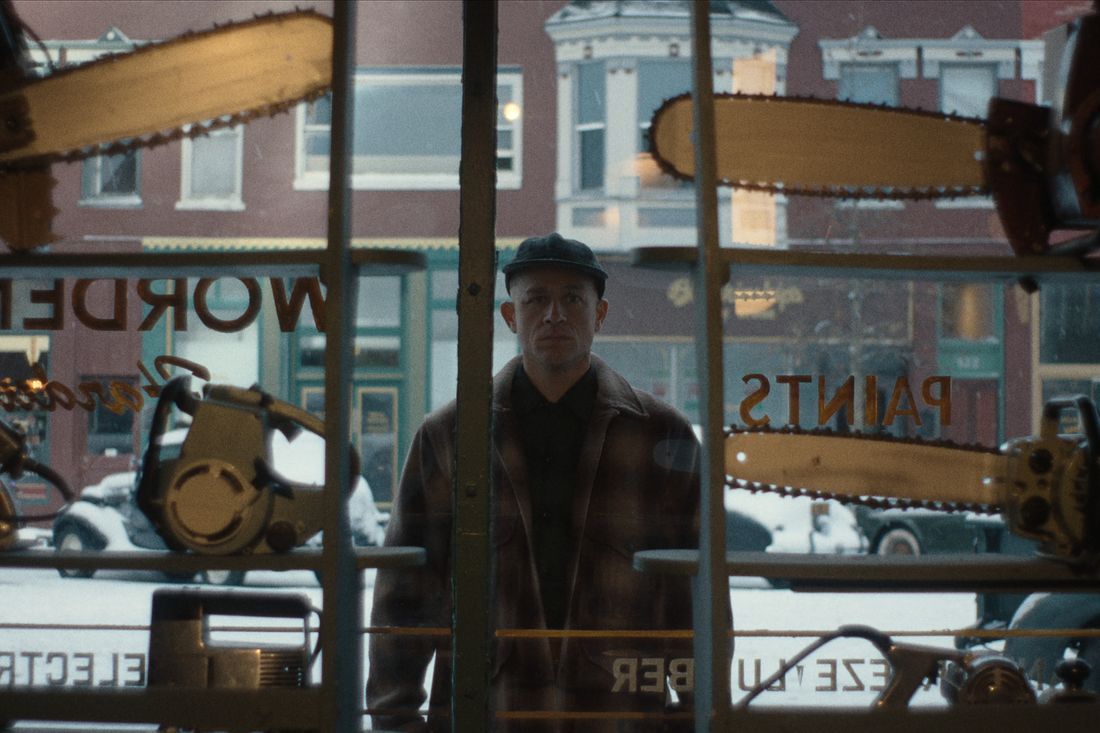
Ryan Murphy’s adaptations labeled “based on a true story” are often loose with the facts. This tendency to bend history became even more noticeable in the Monster series, with the first two seasons taking liberties with the lives of Jeffrey Dahmer and the Menendez brothers. However, the new third season, The Ed Gein Story, uniquely incorporates the idea of multiple perspectives on truth into its storyline. Considering Ed Gein served as inspiration for iconic fictional villains such as Norman Bates (Psycho), Leatherface (The Texas Chain Saw Massacre), and Buffalo Bill (The Silence of the Lambs), Monster not only presents highly fictionalized accounts of Gein’s crimes but also expands to examine how his actions influenced popular culture.
This method allows for plenty of creative freedom when moving away from what actually happened. Ian Brennan, the co-creator of Murphy’s Monster and writer of all eight episodes, seems to enjoy taking small pieces of truth and expanding them dramatically this season. He protects himself from criticism about exaggerating the story by constantly reminding us that Ed’s perception of reality is unstable. If something doesn’t seem to have happened exactly as shown? Well, perhaps Ed believed it did. (Though this doesn’t fully account for some of the changes made to the making of Psycho this season.) While all eight episodes include details rooted in confirmed facts, anything that isn’t verifiable – anything that could have happened, even in Ed’s imagination – is open for exploration in Monster. So, grab your tools – we’re searching for the truth hidden within Monster’s dark and fantastical take on the Ed Gein story.
Heavy spoilers follow.
Ed Gein (Charlie Hunnam)
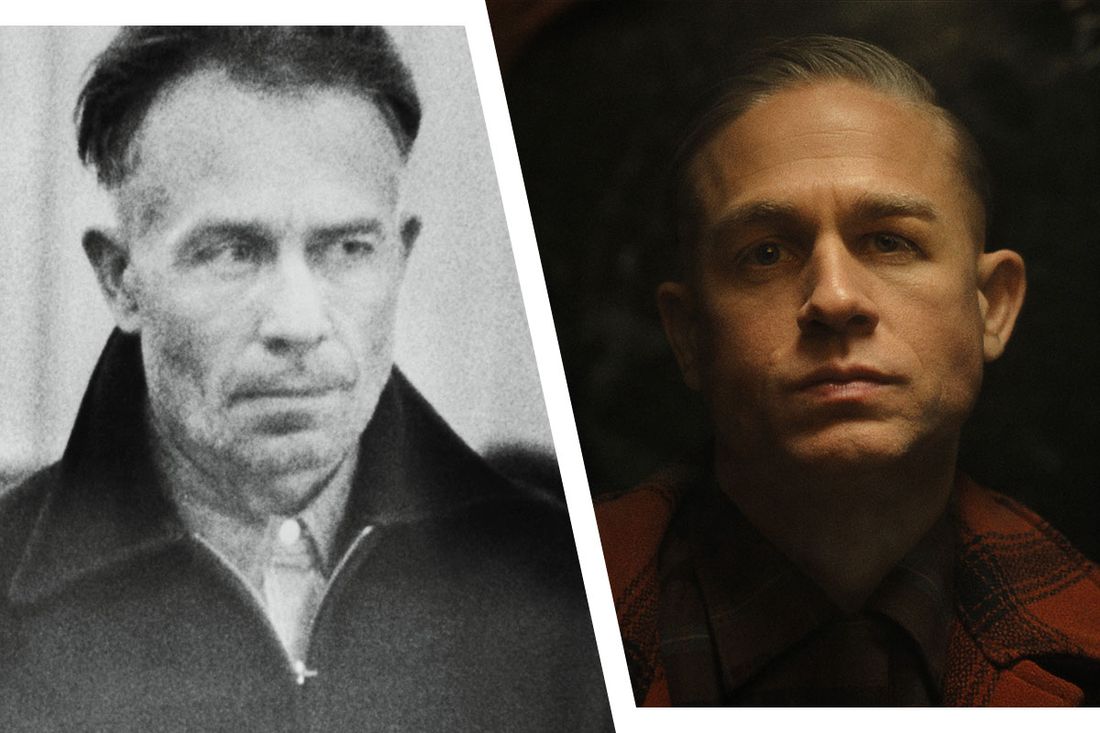
As a film enthusiast, I was absolutely chilled learning about Ed Gein, the so-called “Butcher of Plainfield.” He didn’t just kill at least two women – Mary Hogan and Bernice Worden – but what he did with their bodies, and others he exhumed from the local cemetery, is what cemented his place in history as one of the most disturbing murderers ever. When authorities raided his house in 1957, the items they discovered were genuinely nightmare-inducing. I mean, imagine finding a wastebasket crafted from human skin, bowls made from skulls, a belt made of nipples, and a lampshade created from a human face! They even found nine vulvas in a shoebox. Most of these horrific parts came from the cemetery, but some were from Mary and Bernice. They found Mary’s face – which Ed had been using as a mask – and Bernice’s entire head. It’s gruesome, to be sure, and Monster doesn’t shy away from incorporating all of those gnarly details and more.
Monster largely sticks to the known facts of the terrible crimes Ed Gein admitted to, such as hanging Bernice’s body in a shed, shooting Mary Hogan, and stealing bodies from graves. However, the show presents several other crimes as confirmed truths, even though Gein was only suspected of them. These include the vanishing of Evelyn Hartley, two missing hunters – Victor Travis and Raymond Burgess – who the show depicts as chainsaw murder victims that later inspired the character Leatherface, and even the death of Ed’s brother, Henry. Authorities determined Henry died from suffocation, but the show suggests Ed assaulted him, pointing to bruising on his head.
What about the disturbing details surrounding his mother? A 1957 psychological report featured in The Ed Gein File: A Psycho’s Confession and Case Documents stated, “Following his mother’s death… his emotional needs led him to try and recreate her using body parts from other graves.” This motivation closely matches how Monster portrays Ed Gein. However, it’s important to note that experts disagree on the extent of Gein’s necrophilia; Gein himself claimed he didn’t engage in sexual activity with the exhumed bodies due to the odor. Therefore, the particularly unsettling scene in episode five is speculative, and its accuracy depends on whether you believe someone capable of Gein’s actions had any limits.
Adeline Watkins (Suzanna Son)
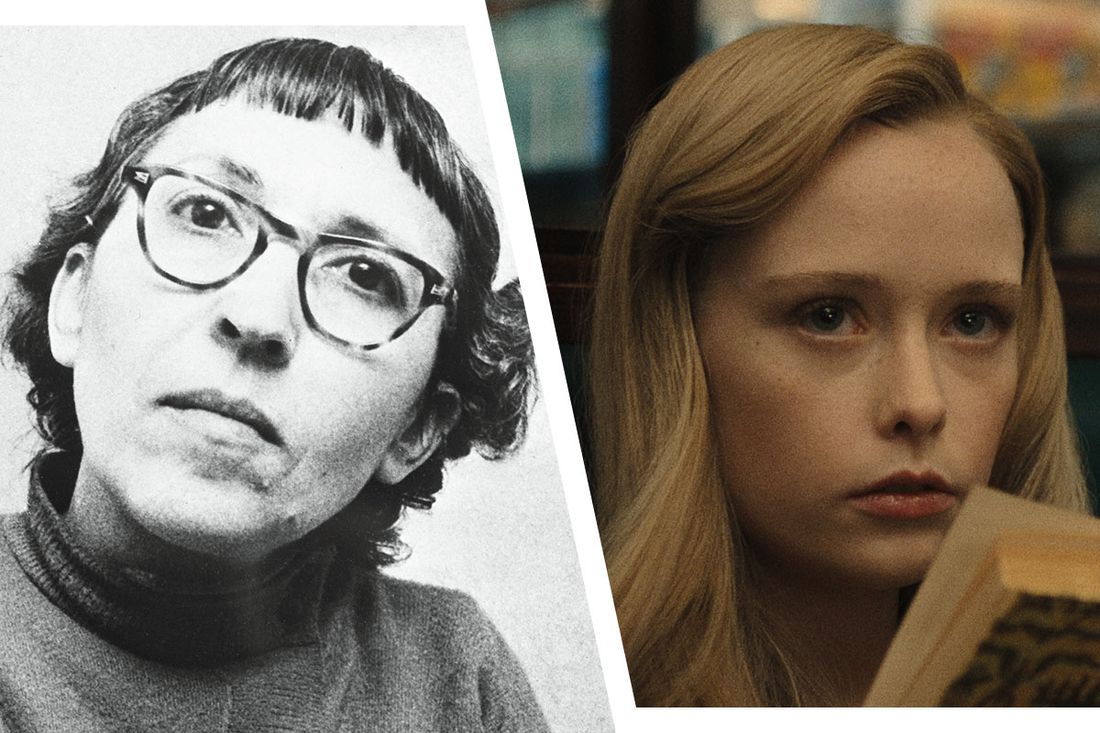
Monster seems to stretch the truth the most when talking about Adeline Watkins, who some say was Ed Gein’s girlfriend, on and off, for over 20 years. Though, that’s likely not true. Almost nothing concrete is known about Watkins except that she knew Gein and initially claimed they’d dated briefly at various points. However, she later took back those statements, saying her earlier comments were exaggerated and that she’d never been to Gein’s home-they only saw a few movies together.
The Monster depiction of Adeline Watkins isn’t frightening in the traditional sense; she’s presented more like Lady Macbeth, encouraging Ed’s violent behavior. Episode five stands out because it suggests Adeline assaulted someone in New York following a meeting with the well-known crime scene photographer Weegee (played by Elliott Gould). Even more disturbingly, her mother (Robin Weigert) confesses to repeatedly trying to cause a miscarriage by falling down the stairs. Is this actually possible? Monster doesn’t need proof – just the possibility is enough to move the story forward.
The suggestion that Watkins helped enable Gein’s murders and the mistreatment of bodies could simply be seen as part of the show’s deliberate blend of fact and fiction. After all, Watkins also embodies a character similar to Marion Crane, initially shown with Ed secretly watching her-a nod to Norman Bates-and later imagined being violently killed in the shower, presenting viewers with a version of Psycho that didn’t actually happen. Ultimately, she fulfills several roles in the series: she’s an object of desire, an accomplice, a potentially disturbed individual herself, and the girlfriend of someone with morbid fixations. The fact that the real Adeline Watkins was likely none of these things actually makes sense for a show exploring how truth transforms into legend, and how those two concepts often become intertwined.
Augusta Gein (Laurie Metcalf)
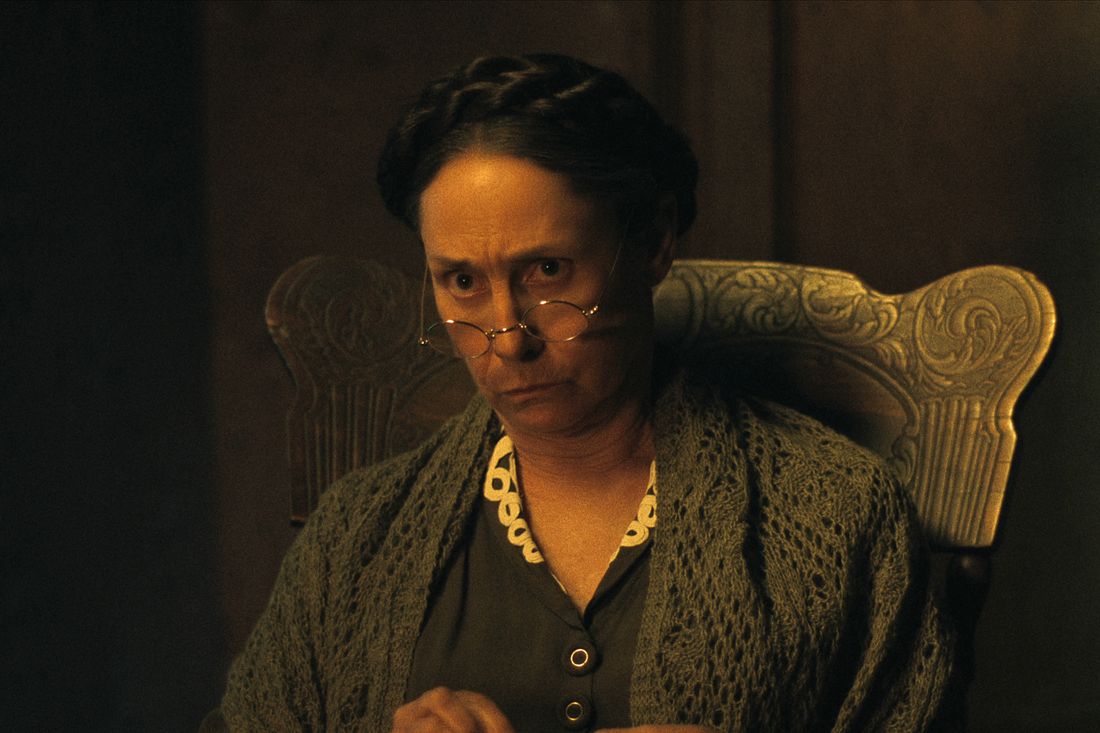
We don’t learn much about Ed Gein’s mother, Augusta, in Monster. Most of what we see and hear about her is presented through Gein’s distorted perceptions and hallucinations. Similar to many involved in this case, very little is known about Augusta Gein beyond the fact that she married George and had two sons, Ed and Henry. The show portrays her as deeply religious, reflecting reports of her strong disapproval of perceived immorality and those she considered to be ‘loose women.’ After George died in 1940 and Henry in 1944, Ed was left alone with Augusta, and this is when his mental health began to worsen rapidly.
Once more, Monster skillfully mixes real events with fictionalized ones from the start. Surprisingly, the detail about Ed and Augusta witnessing someone mistreating a dog appears to be based on Gein’s own story, though the show exaggerates the immediate aftermath. The series does effectively portray Ed’s intense attachment to Augusta, echoing the insights of Harold Schechter, who wrote in his 1989 book Deviant that she was “his sole companion and the one person he truly loved,” and that her death left him “completely isolated.”
Alfred Hitchcock (Tom Hollander)
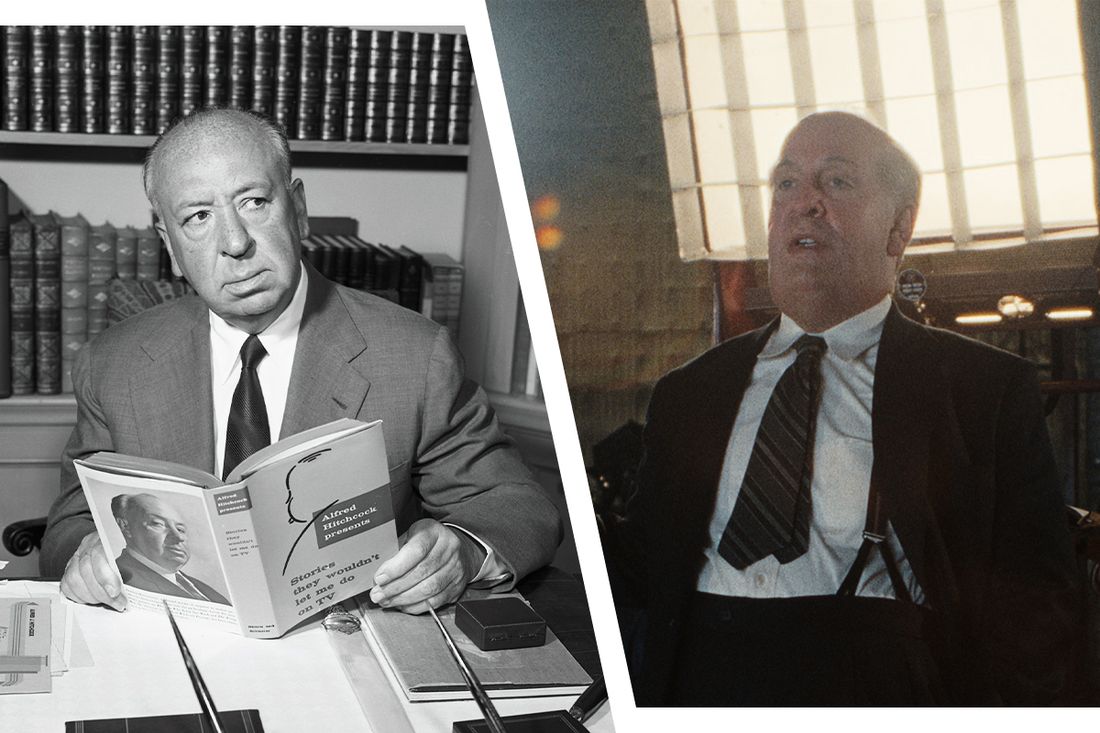
As part of a segment exploring Ed Gein’s impact on popular culture, Brennan suggests that the Master of Suspense was fascinated by how Gein challenged moral limits – a fascination that likely influenced his creation of Norman Bates. It’s well known that Psycho was adapted from Robert Bloch’s novel of the same name, and that novel was loosely based on Gein’s crimes. Interestingly, a review of the book came to the attention of Hitchcock’s assistant, Peggy Robertson, and the director even waived his salary and reduced the film’s budget to convince Paramount to approve the project. While much has been documented about the making of Psycho – including its significant departures from the book, such as a minor role for Marion and a different appearance for Bates compared to Anthony Perkins – the idea that Hitchcock was as captivated by Gein’s disturbing behavior as depicted in Monster is a relatively new and largely speculative one.
As a follower of the show, I was really thrown when episode two completely twisted reality. We see Hitch watching a chaotic screening of Psycho – people were actually throwing up and fainting! They even recreated the famous shower scene, with Hunnam’s Ed playing Norman and Son’s Adeline as Marion. If you’ve seen the original movie, you’ll notice the nudity and violence in this Monster version don’t quite match up. It’s clear they’re exaggerating everything about the making of Psycho for dramatic effect, and it’s just another example of that throughout the episode.
Alma Reville (Olivia Williams)
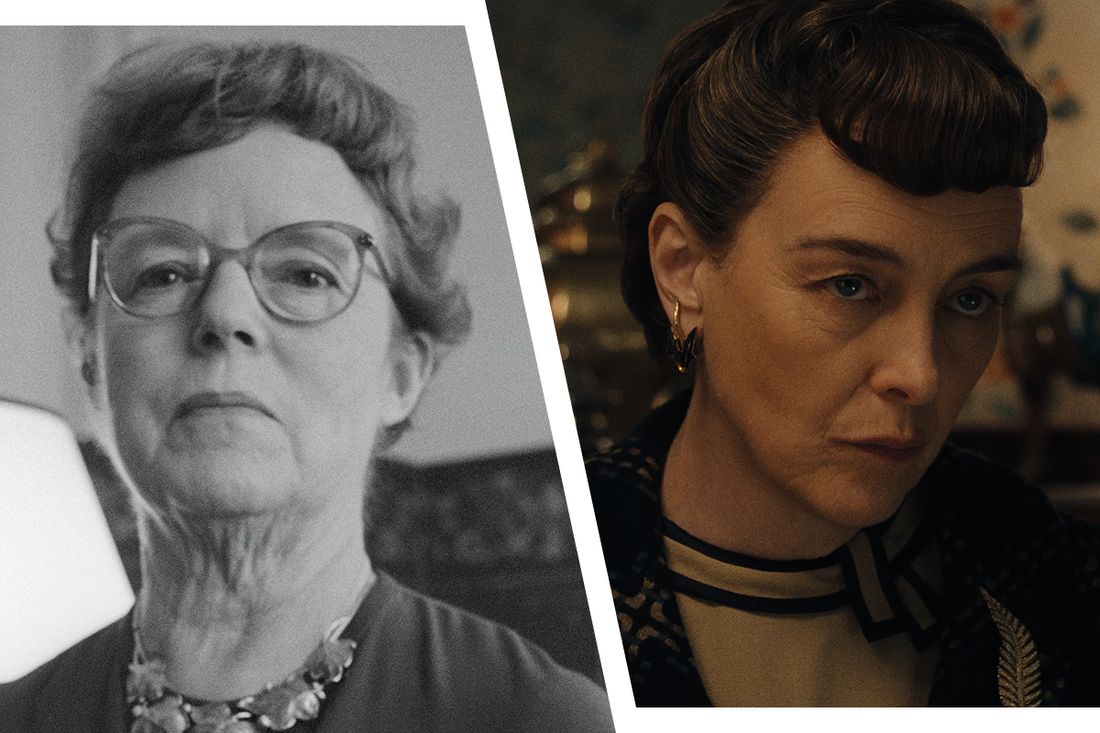
Amidst a series of characters who are larger than life, Alma Reville stands out as surprisingly understated, yet she feels surprisingly incomplete, particularly considering the skill of the actress portraying her. The historical Alma Reville married Alfred Hitchcock in 1926, and they stayed together until his passing in 1980. While her contributions to Hitchcock’s work are well-known – she even helped write some of his most famous scripts – Monster largely presents her as simply a critical listener for Alfred, reacting with disapproval after Psycho unfairly labels him as a creator of “sex horror.” Her primary role seems to be expressing concern for Alfred and offering comments like “You have other stories to tell.”
Anthony Perkins (Joey Pollari)
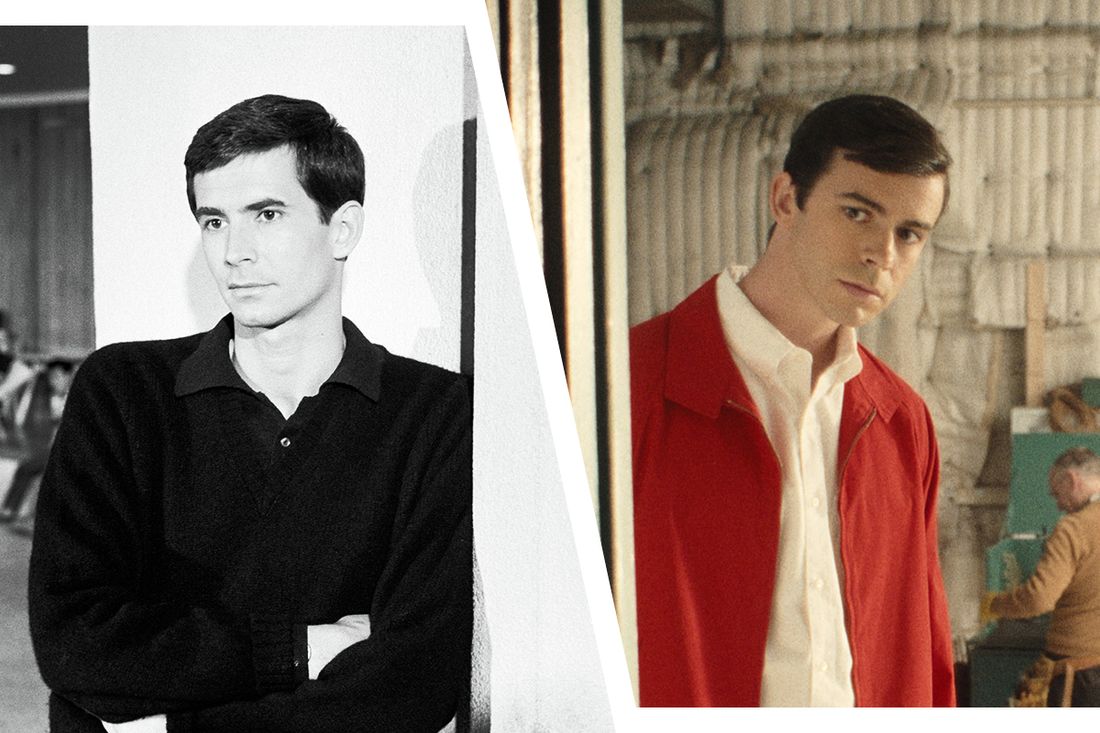
Anthony Perkins, who famously starred in Hitchcock’s Psycho, doesn’t have much to do in Monster either. However, the way the show links him to Ed Gein feels more disrespectful to his career than its handling of Alfred and Alma. It’s particularly jarring that a show about a cross-dressing serial killer introduces the actor who would later play Norman Bates while he’s cross-dressing with his partner. It’s quite uncomfortable. Later, Bates is shown receiving oral sex from his boyfriend while watching himself in Psycho on a large screen. There isn’t much substance here to separate fact from fiction, as Monster is primarily focused on the fact that Perkins felt he needed to hide his sexuality to maintain his celebrity. And that weak connection to Gein’s private life isn’t just superficial-it’s frankly distasteful.
Tobe Hooper (Will Brill)
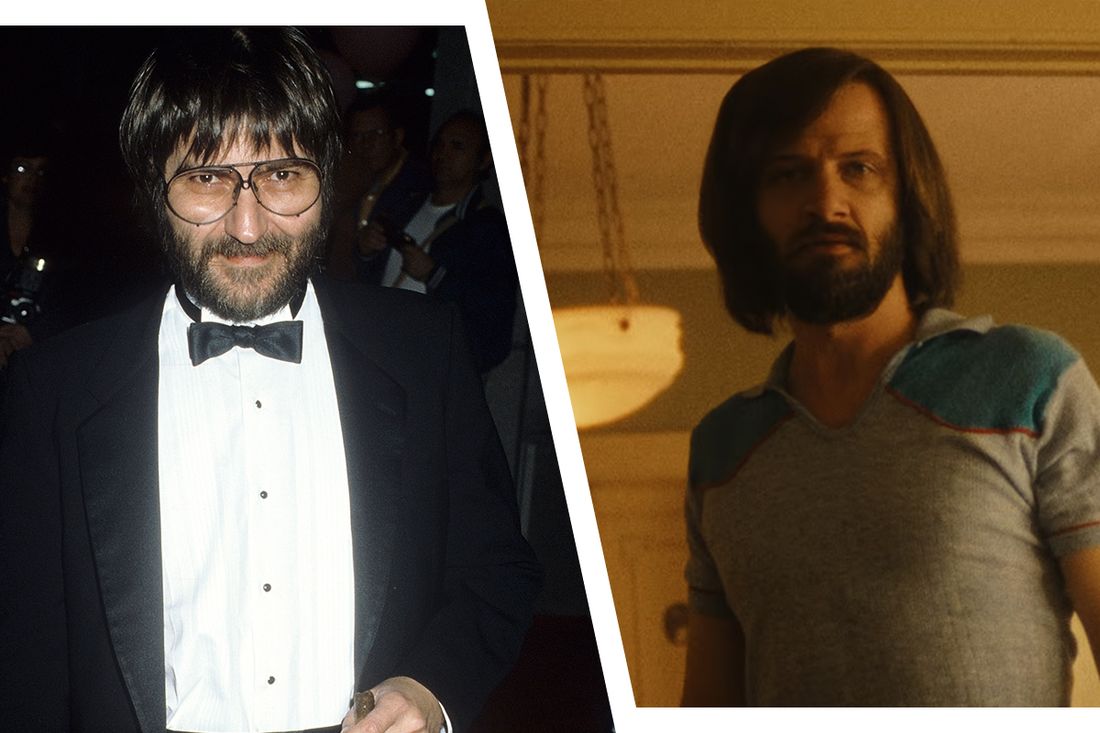
The fourth episode of Monster proposes that a young Tobe Hooper first learned about Ed Gein from his father during dinnertime conversations, and this influenced his creation of the 1974 horror classic The Texas Chain Saw Massacre. The episode also depicts an adult Hooper being inspired while at a Montgomery Ward store, imagining using a chainsaw to cut through a crowded line of holiday shoppers. He then blended stories about Gein’s disturbing practices with his vision for the character of Leatherface during the filming of TCM.
There’s a small amount of accuracy in Monster’s portrayal of Hooper’s ideas. The director did mention that aspects of Gein’s crimes influenced parts of TCM, but the film covers much broader themes than just the Plainfield Ghoul – it also explores the spread of false information and references the Vietnam War. Hooper aimed to present a story that felt real, even if it wasn’t entirely factual, similar to what Monster attempts to do.
Bernice Worden (Lesley Manville)
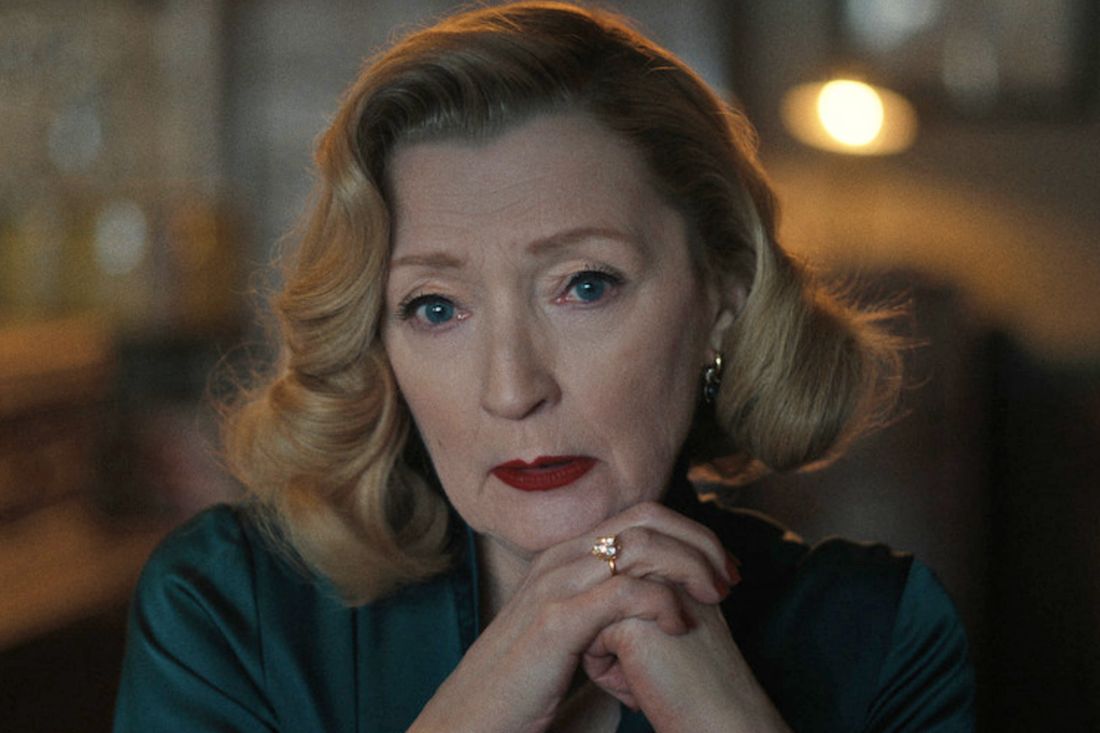
I remember when Bernice Worden, the 58-year-old owner of the hardware store in Plainfield, went missing back in November 1957. It was awful. Her son, Frank Worden, who was a Deputy Sheriff, took charge of the case. He found bloodstains at the store and learned that Ed Gein had been there the night before Bernice disappeared. That discovery led them to Gein’s farm, and what they found there was just horrifying. They discovered Bernice’s body – she’d been decapitated, flayed, and hung in his shed. It was later believed that Gein targeted both Mary Hogan and Bernice Worden because they were roughly the same age, looked similar, and came from similar backgrounds. It’s a truly disturbing case.
Monster includes a scene where Ed fantasizes about meeting Ilse, which motivates him to kill Mary (played by Rondi Reed). However, the show takes its depiction of Bernice to an extreme, even imagining a passionate sexual encounter between them where Ed cross-dresses before they have sex. Monster connects Ed’s murder of Bernice to his internal struggles with sexuality and his relationship with his mother through this fantasy, but emphasizes that it’s not real by showing green blood flowing from Bernice’s head after he shoots her in the hardware store.
Evelyn Hartley (Addison Rae)
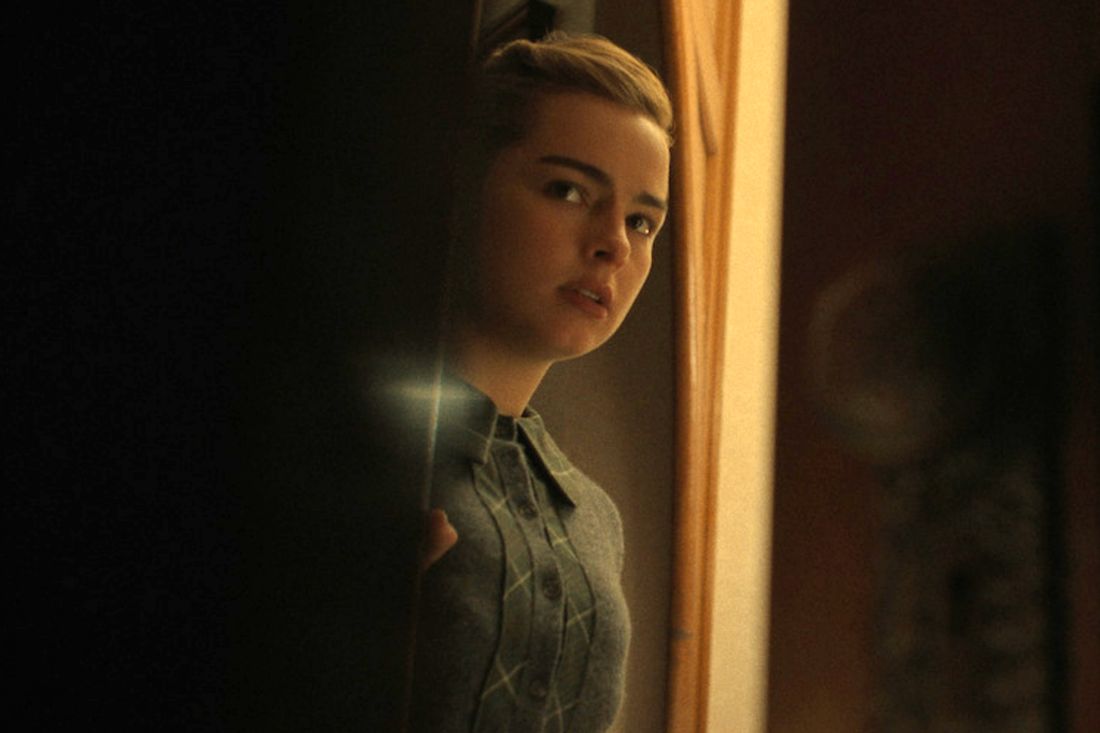
As a true crime buff, I was really disturbed learning about the disappearance of 14-year-old Evelyn Hartley. Back in October 1953, she went missing in La Crosse County, Wisconsin, after taking a babysitting job for Viggo Rasmussen’s 20-month-old daughter, and she was never seen again. A witness claimed to have spotted two men in a car near the Rasmussen home that night, and the scene itself was creepy – every room in the house was locked, and a window was missing its screen with a stepladder conveniently placed underneath. Sadly, Evelyn’s body was never recovered. When Ed Gein was arrested for his other crimes, investigators questioned him about Evelyn’s case since he lived nearby. They searched his home, but found absolutely no sign of her. It’s chilling to think about, but the fact that Gein wasn’t even trying to hide body parts likely contributed to the authorities ruling him out as a suspect in this case – and also in the disappearance of 8-year-old Georgia Weckler, which the show also brought up.
The third episode of Monster suggests Ed sought a babysitting position to demonstrate his potential as a father to Adeline, but Evelyn Hartley took the job instead. What follows is disturbing: Ed stalks and abducts Evelyn, holding her captive in his basement and angrily insisting he could fund a wedding with earnings from babysitting. He then introduces her to “mother” before violently attacking her with a hammer. Even within a series filled with intensely disturbing scenes, this stands out as particularly gruesome.
Ilse Koch (Vicky Krieps)
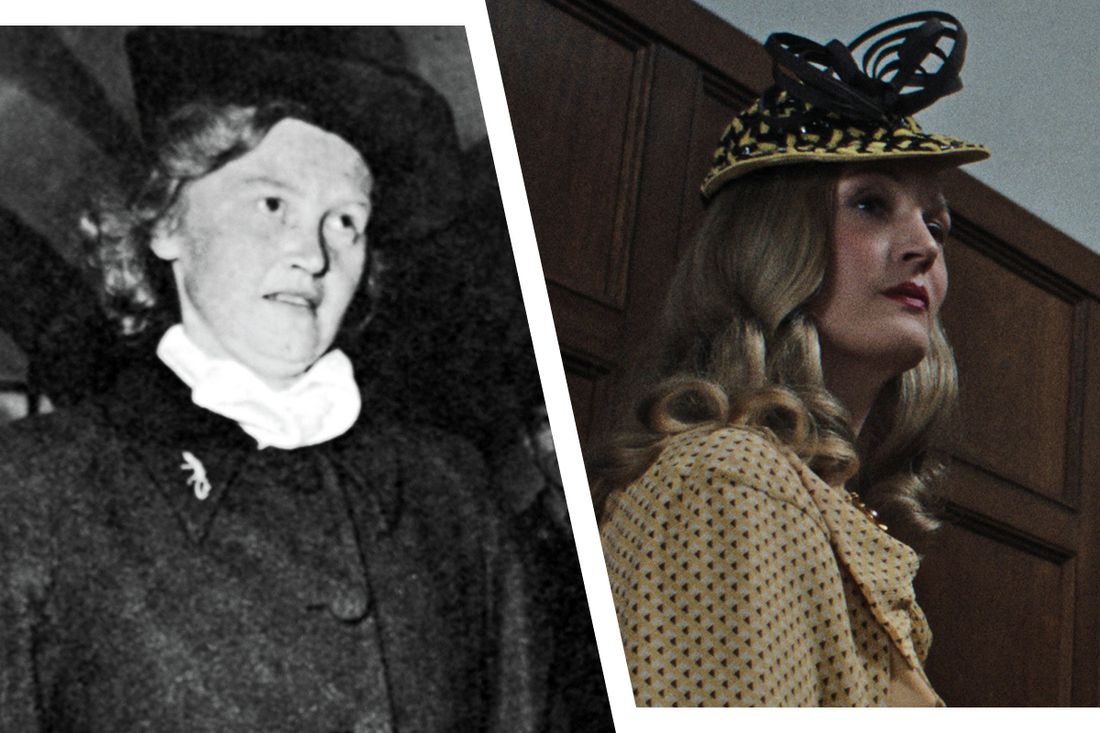
Ilse Koch, a German war criminal married to the commander of the Buchenwald concentration camp during World War II, is a figure worthy of a Monster-themed season of her own. The show draws inspiration from a comic book about Koch, titled The Bitch of Buchenwald, which Adeline gives to Ed. This suggests a link between her cruel treatment of Jewish people during the Holocaust and the horrific crimes committed by Ed Gein in Wisconsin. Much of the show’s portrayal of Koch is based on witness statements given during her 1947 US military court trial at Dachau, where she faced accusations mirroring the atrocities depicted in the series. This includes the claim that she had skin turned into lampshades – an act two prisoners said they witnessed, though it was never definitively proven. While items made from human skin *were* discovered when Buchenwald was raided, a direct connection to Koch could never be confirmed.
Monster presents its version of Ilse Koch, diverging from historical facts because these depictions are simply what Ed imagines after reading a comic book. The question of whether “The Bitch of Buchenwald” actually committed the acts shown on the series is unimportant. The show frames her actions within the exaggerated context of a comic book, which, like Monster itself, uses hyperbole to emphasize its themes. However, this changes in the seventh episode when Ed connects with the imprisoned Ilse via ham radio right before she takes her own life. While Ilse Koch did commit suicide in prison, the show’s suggestion that she spoke with Gein beforehand is fictional. By this point in Monster, the line between reality and illusion has blurred so completely that we’re constantly shifting between Ed’s perceptions and possibly, have been all along.
Christine Jorgensen (Alanna Darby)
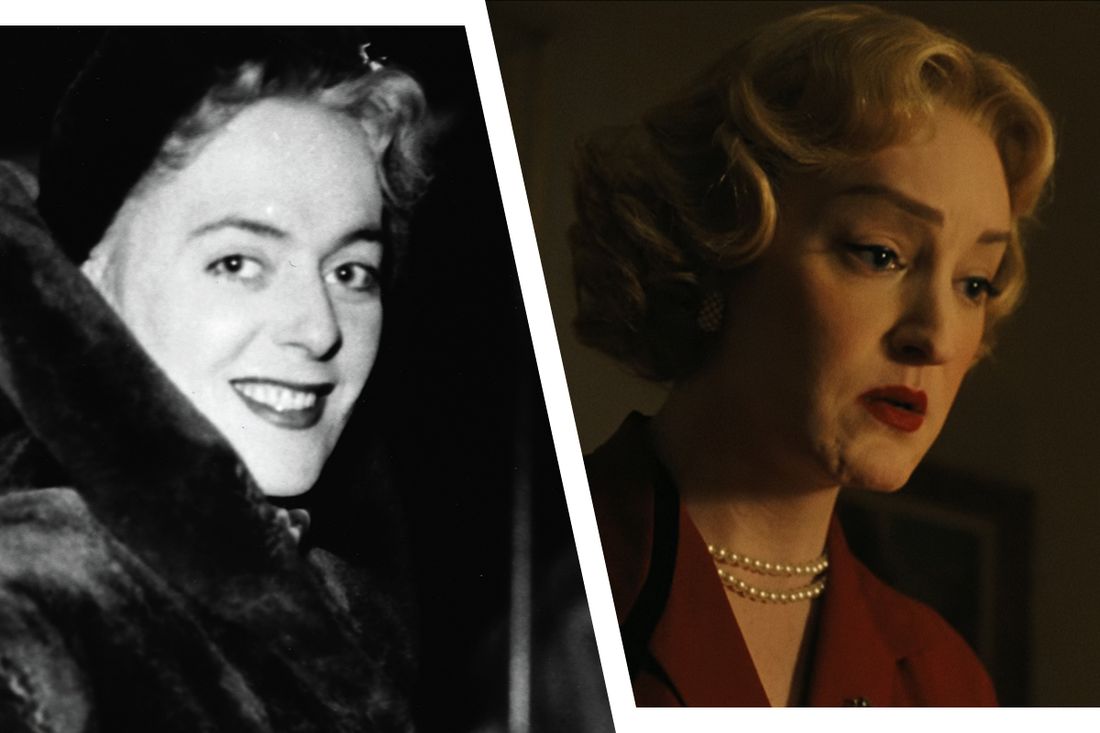
In the seventh episode, Ed, who has been living within the confines of an institution, begins to understand the reasons behind his cross-dressing. He discovers a recording of Christine Jorgensen’s “I Enjoy Being a Girl” and is shown dancing and singing along while wearing a bra and panties. Christine Jorgensen was one of the first publicly known individuals to undergo sex reassignment surgery, and she became a well-known figure in New York City during the early 1950s. In 1957, she attended a performance of Rodgers and Hammerstein’s Flower Drum Song and was particularly moved by a song that also deeply resonates with Ed, ultimately making it her own.
In the “Ham Radio” episode of Monster, Gein “calls” Jorgensen to ask why he feels emotionally detached and uses a euphemism for his genitals. While recounting a story to his imagined Christine about his mother catching him masturbating and the resulting abuse, we hear her voice emanating from his therapist – the person he’s actually speaking to – and the scene cuts to the famous moment in The Silence of the Lambs where Buffalo Bill wears his woman suit. This connection highlights the similarities between Ed’s tendencies and the themes of that acclaimed film. However, even as a figment of his imagination, Christine offers Ed a crucial dose of reality, firmly rejecting his attempt to justify his wrongdoing by referencing her experiences. “I don’t think you and I are alike at all,” she states. “The transexual is rarely the perpetrator of violence, Mr. Gein. We are far more likely to be the victims of violence.”
Jerry Brudos (Happy Anderson) and Other Famous Killers
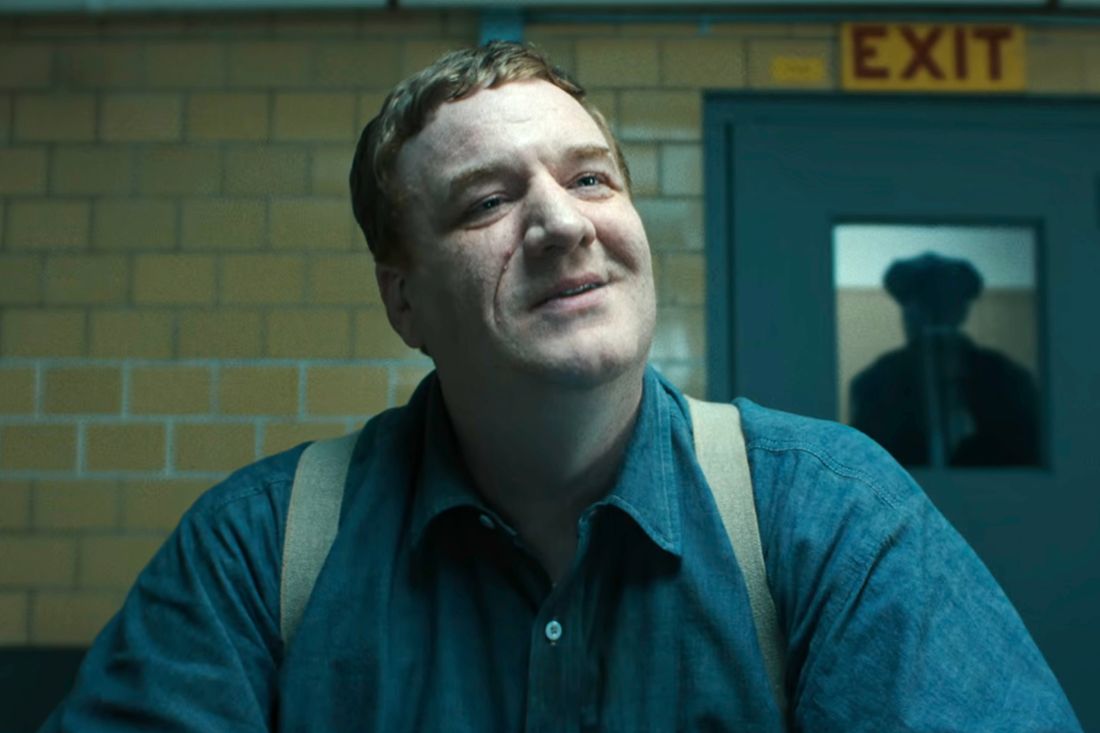
The incredibly strange conclusion of Monster: The Ed Gein Story feels remarkably similar to a potential third season of Mindhunter – perhaps as close as we’ll ever get. Happy Anderson, who previously portrayed serial killer Jerry Brudos in the acclaimed show, reprises his role as the Shoe Fetish Slayer. He speaks with characters who are obviously stand-ins for Holden Ford and Bill Tench – though they are called John Douglas and Robert Ressler – explaining how Ed Gein influenced him. Afterwards, they return to their basement office to discuss the case with a character clearly based on Wendy Carr.
Following that shocking opening, the finale emphasizes how Gein impacted many other serial killers. Anderson’s Brudos states, “I dissected several bodies after learning about the man in Wisconsin who did it.” The notorious Richard Speck (Tobias Jelinek) discusses his obsessions and sends a letter to his partner, Ed, which Gein then cleverly uses, similar to Hannibal Lecter, to help authorities capture Ted Bundy. Then, in one of the most unbelievable moments ever shown on Netflix, a dying Gein experiences a vision of serial killers expressing gratitude for his influence, including Brudos, Speck, Charlie Manson, Ed Kemper, and others. After a strange farewell with Adeline that seems partially imagined, he returns to the realm of monsters within his mind and climbs the Psycho staircase to reunite with his mother, all set to the tune of Yes’s “Owner of a Lonely Heart.” And so Monster concludes by fully blending reality, fiction, and lasting impact into a wildly imaginative vision that’s hard to fathom.
Read More
- Zerowake GATES : BL RPG Tier List (November 2025)
- How Many Episodes Are in Hazbin Hotel Season 2 & When Do They Come Out?
- T1 beat KT Rolster to claim third straight League of Legends World Championship
- Hazbin Hotel Voice Cast & Character Guide
- All Battlecrest Slope Encounters in Where Winds Meet
- LINK PREDICTION. LINK cryptocurrency
- What time is It: Welcome to Derry Episode 3 out?
- Terminull Brigade X Evangelion Collaboration Reveal Trailer | TGS 2025
- Apple TV’s Neuromancer: The Perfect Replacement For Mr. Robot?
- Decoding Shock Waves: How Deep Learning Is Illuminating Particle Acceleration
2025-10-04 05:59